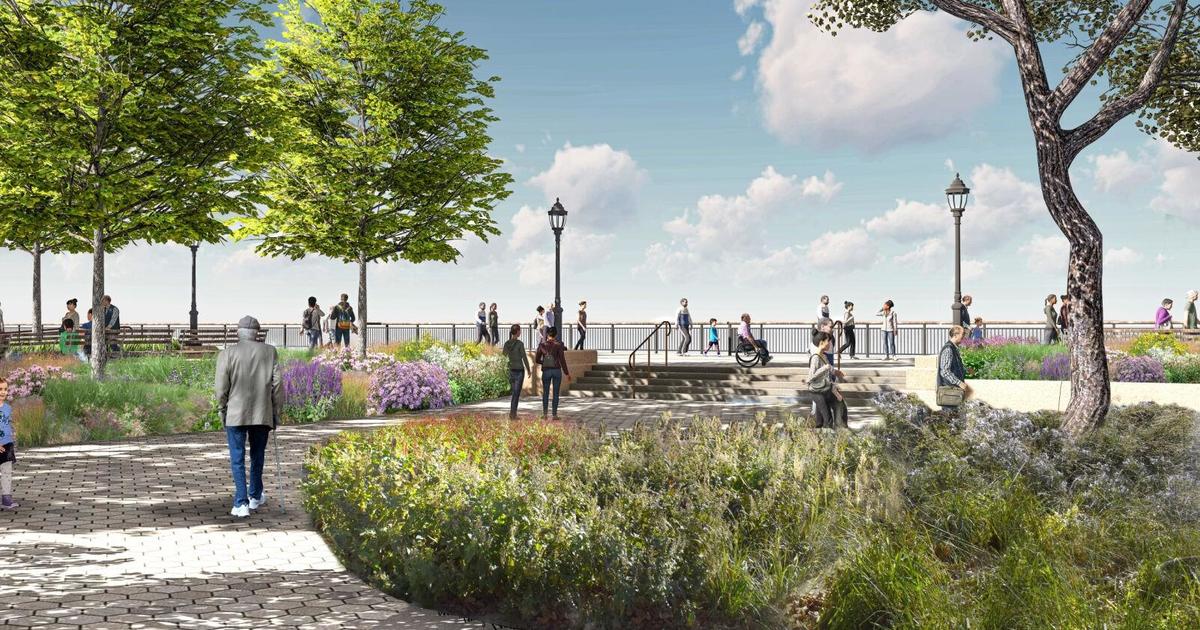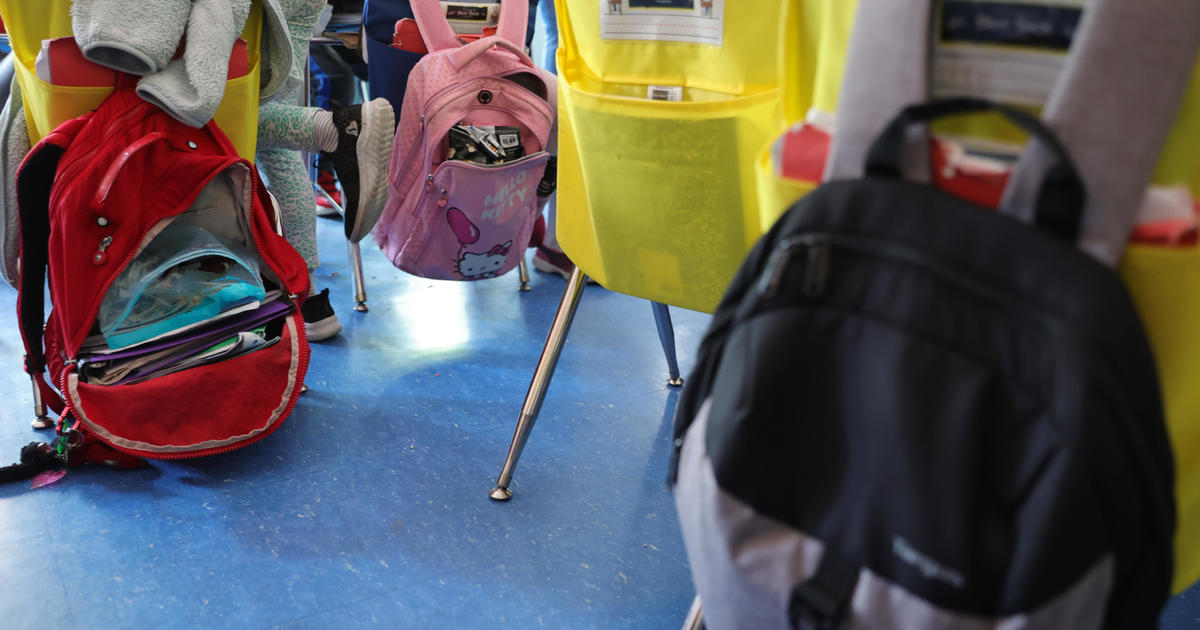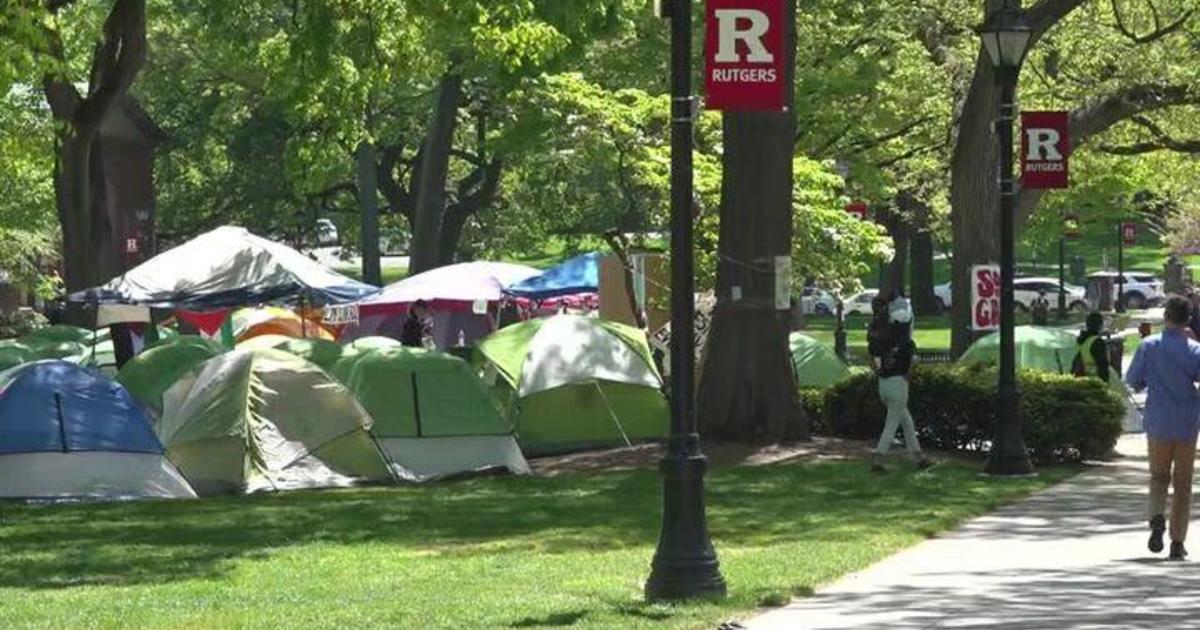NY State Issues Recommendations For Preventing Devastation From Another Superstorm
NEW YORK (CBSNewYork/AP) -- A new report has issued a long list of suggestions for preventing another storm like Superstorm Sandy from bringing similar devastation to New York.
As 1010 WINS' Sonia Rincon reported, the recommendations included waterproofing transit equipment, raising some of the rails and signal systems, adding floodgates, and having water pumps, generators, and safe havens similar to the old Civil Defense shelters ready.
NY State Issues Recommendations For Preventing Devastation From Another Superstorm
"All of these things are really critical to allowing New York to rebound more quickly and more safely when the next event hits," said Rockefeller Foundation President Dr. Judith Rodin, who co-chaired the NYS 2100 Commission. "And what we're sure of is that the next event will hit."
The 205-page report obtained by The Associated Press also calls for two more tunnels out of Manhattan, a rapid bus system and another Long Island Rail Road track and details how to better pay for it all by forging new partnerships with companies and several ways to improve insurance coverage for the state and residents.
Some elements of the report were presented last week, but the report was not released publicly. The full report was delivered to Gov. Andrew Cuomo.
The report includes other recommendations that are already used in other states and countries, many at little or no cost. It recommends partnerships with private businesses for several projects and combining already-budgeted or planned routine maintenance or capital projects with measures to protect against disaster.
Previous drafts of the report focused on barrier islands and man-made barriers as well as inflatable ``plugs'' to close off subways and closures for air vents. Though they are elements of the report, they are among many recommendations.
Former New York State Assemblyman Richard Brodsky said the report had some good ideas.
"But it failed to point out there is already law requiring the city, the state and the MTA to have prevention measures in place, and they didn't," he said.
Brodsky co-authored that law after Hurricane Katrina in 2005.
Sandy is the most costly natural disaster since Katrina. The storm damaged or destroyed 305,000 housing units in New York and more than 265,000 businesses were disrupted there, officials have said. More than 72,000 homes and businesses were damaged or destroyed in New Jersey.
Four Hudson and East rivers tunnels in New York City were flooded for the first time in 100 years by Sandy and nearly half of subway riders -- equivalent to the population of Miami, Atlanta or Pittsburgh -- had no or reduced service on the nation's busiest subway system, the report notes.
The report further identifies measures to protect against earthquakes and the danger of tsunami-like disasters that could hit New York City after an earthquake, as well as specific protections needed for upstate areas hit hard in 2011 by tropical storms Irene and Lee.
Cuomo spokesman Josh Vlasto declined to comment.
The measures in the report include:
• Raising some rail lines and signals above projected flood levels.
• Waterproofing subways and electronics sensitive to salt water.
• Greater attention to project the drinking water supply. The state's 30- and 40-year-old wastewater systems statewide were overwhelmed by storms the last two years, the report stated.
• Burying key energy lines underground to reduce damage from downed wires.
• A rapid bus transit network in dedicated lanes to reduce dependence on subways in lower Manhattan and allow exits to outer boroughs.
• Well-stocked and disaster-protected safe havens with generators in schools, hospitals and government buildings as well as big-box stores and shopping malls willing to be sanctuaries in exchange for incentives and support.
• Greater coordination with New Jersey and Connecticut in girding against the next storms.
• Adding water pumps at airports with emergency generators that with other measures would have kept airports open during Sandy. The report notes airports are a critical piece in long-term relief efforts.
• Hiring a New York chief to analyze risk and act upon in, replacing separate efforts by agencies.
• Allowing the growth of new grasses in wetland such as the Fire Island Wilderness breach. This would be part of more natural and man-made barriers which could also increase public access to the shore and reduce ``urban heat island effects.''
• Using porous materials for roads near the coast.
• Pooling critical energy apparatus in regions such as extra-high voltage transformers which can take months to manufacture and transport.
• Buying updated software to better predict flooding.
• Installing waterproof vertical, roll-down doors at the foot of subway stair entrances, closures for underground vents, inflatable plugs and bladders for ventilation shafts, and sealing electrical equipment from water.
• Installing barriers and gates to prevent flooding of docks and ports.
• A state fuel depot.
• Coordination of skilled residents such as electricians to respond to disaster and training for all citizens to respond to disaster.
What do you think of the recommendations? Leave your comments below...
(TM and © Copyright 2013 CBS Radio Inc. and its relevant subsidiaries. CBS RADIO and EYE Logo TM and Copyright 2013 CBS Broadcasting Inc. Used under license. All Rights Reserved. This material may not be published, broadcast, rewritten, or redistributed. The Associated Press contributed to this report.)



